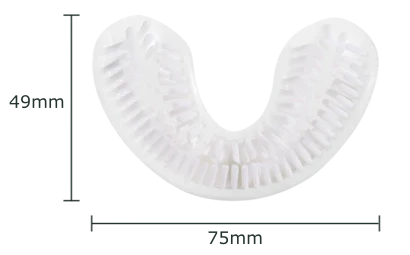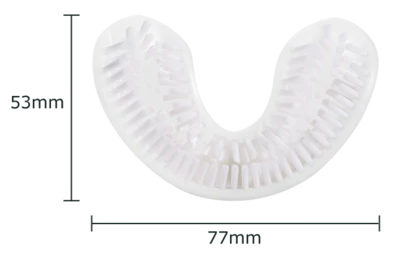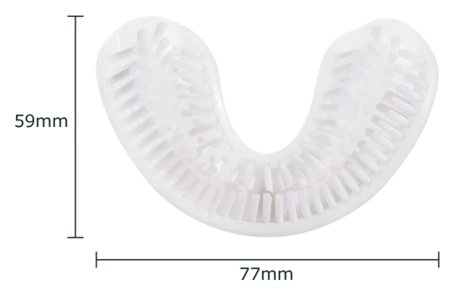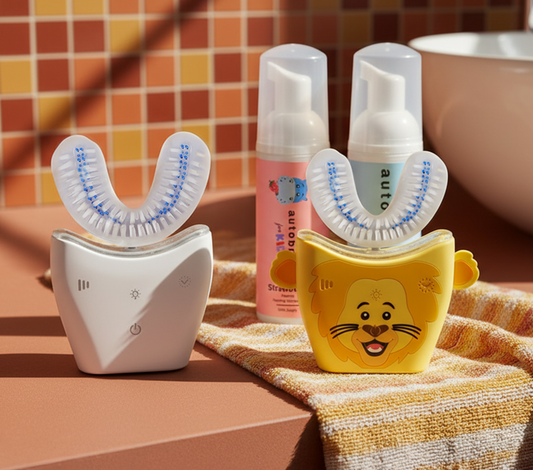
What Are Tongue Scrapers?
Oral hygiene isn’t just about brushing and flossing. It's a full routine that keeps your mouth healthy. One tool often overlooked in this routine is the tongue scraper. But what exactly is a tongue scraper?
A tongue scraper is a simple tool designed to clean the surface of your tongue. It removes bacteria, food debris, dead cells, and fungi—things that brushing alone can miss. This practice has its roots in ancient Ayurvedic traditions, and today, it’s gaining traction in modern dental care.
In this guide, we’ll explore what tongue scrapers are, their benefits, how to use them, and why they should be part of your oral hygiene routine.
Understanding Tongue Scrapers
A tongue scraper is a small tool made to improve oral hygiene by cleaning the tongue. It works by removing the buildup of bacteria, food, and other debris that can accumulate on your tongue.
The practice dates back centuries to Ayurvedic medicine, which emphasized tongue scraping as part of daily health routines. The idea was simple: a clean tongue contributes to overall wellness.
Your tongue is covered in tiny bumps called papillae. These bumps trap bacteria and food particles, which can cause bad breath and other oral issues. Regular tongue cleaning helps prevent these problems and promotes a fresher mouth.
Since the tongue's surface is rough, it easily collects bacteria. Cleaning it regularly helps maintain a healthy balance in your mouth’s bacteria, keeping your breath fresh.
Benefits of Tongue Scraping
Tongue scraping offers several benefits, including:
- Fresh breath: It’s one of the most effective ways to fight bad breath (halitosis). Many people experience bad breath even after brushing, but a tongue scraper tackles the bacteria on your tongue, which is a major cause.
- Improved taste: A coated tongue can dull your taste buds. Scraping regularly can remove the coating and improve your ability to enjoy food.
- Healthier mouth: By reducing bacteria on the tongue, you lower the risk of plaque buildup, which contributes to cavities and gum disease.
- Cleaner mouth: Brushing doesn’t always clean the tongue well. A tongue scraper is designed to do just that, making your overall oral care routine more effective.
Adding tongue scraping to your routine can significantly improve your oral health and overall well-being.
Types of Tongue Scrapers
Tongue scrapers come in several materials, each with its advantages:
- Plastic: Affordable and lightweight, but may not last as long as other materials.
- Metal (Stainless Steel): Durable and provides a strong scraping action. Some people find them heavier, but they’re built to last.
- Copper: Common in Ayurvedic practices, copper scrapers have natural antibacterial properties. However, they need more maintenance as copper can tarnish over time.
Choosing the right scraper depends on your personal preference—whether you prioritize affordability, durability, or traditional benefits.
How to Use a Tongue Scraper
Using a tongue scraper is simple. Just follow these steps:
- Choose a scraper that fits your preference and make sure it's clean.
- Stand in front of a mirror for better guidance.
- Open your mouth wide and extend your tongue.
- Place the scraper at the back of your tongue.
- Gently pull the scraper forward, toward the tip of your tongue.
- Rinse the scraper after each stroke.
- Repeat until the surface of your tongue is clean.
You can scrape your tongue once or twice a day—usually after brushing your teeth. Be gentle to avoid injuring your tongue. Over time, you’ll see the benefits of fresher breath and a cleaner mouth.
Featured Product: autobrush® Automatic Tongue Scraper
If you’re looking for an easy, effective way to incorporate tongue scraping into your routine, the autobrush® Automatic Tongue Scraper is an excellent choice. Designed for both kids and adults, it uses gentle electric vibrations to clean your tongue thoroughly. This makes the process quick, comfortable, and more effective than manual scrapers.
Using the autobrush® Automatic Tongue Scraper helps eliminate odor-causing bacteria and promotes a fresher mouth. Pair it with your daily brushing routine to achieve a comprehensive clean. Its design is ideal for those who want to take their oral hygiene to the next level without extra hassle.
Discover how this modern tool can help you enjoy fresher breath and a healthier mouth with every use.
Why You Should Add Tongue Scraping to Your Routine
Incorporating tongue scraping into your daily routine can take your oral care to the next level. It works alongside brushing, flossing, and mouthwash to keep your mouth cleaner. Brushing and flossing miss the tongue, and scraping fills that gap.
To get the most out of your oral care routine, add tongue scraping in the morning and evening. Regular scraping reduces bacteria and keeps your breath fresh all day.
The Science Behind Tongue Scraping
Research supports tongue scraping’s role in improving oral hygiene. Studies show it significantly reduces bacteria on the tongue, leading to fresher breath and a cleaner mouth.
Dental experts also endorse tongue scraping as part of a well-rounded oral care routine. Many users report noticing fresher breath and improved oral health after adding it to their regimen.
Choosing the Right Tongue Scraper
Picking the right tongue scraper matters for comfort and effectiveness. Plastic scrapers are affordable but don’t last as long. Metal and copper scrapers are more durable and can offer additional benefits, such as antibacterial properties in copper.
When choosing a scraper, think about your needs and preferences. Do you want something affordable or something long-lasting? Consider what will work best for your lifestyle.
Caring for Your Tongue Scraper
To make your scraper last, clean it after each use. Rinse it with warm water, and occasionally wash it with mild soap and a soft brush. Store your scraper in a dry place to avoid bacteria buildup.
Metal and copper scrapers can last for years with proper care. If you’re using a plastic scraper, replace it as needed to maintain cleanliness.
The Bigger Picture: How Tongue Scraping Benefits Your Health
Tongue scraping isn’t just about freshening your breath. It also plays a role in overall health. Tongue scraping helps remove harmful bacteria from your mouth. This can lower the risk of dental problems. These problems may be linked to other health issues, like heart disease and diabetes.
This simple practice has a long history in cultures around the world. It is especially important in Ayurvedic medicine, where it has been used for centuries to support health and wellness.
Conclusion: Make Tongue Scraping Part of Your Routine
Adding tongue scraping to your oral care routine is an easy way to improve your dental health. It complements brushing, flossing, and mouthwash to keep your mouth fresh and clean.
Embrace tongue scraping as a simple habit that can have a lasting impact on your overall health. It’s a small change with big benefits.












